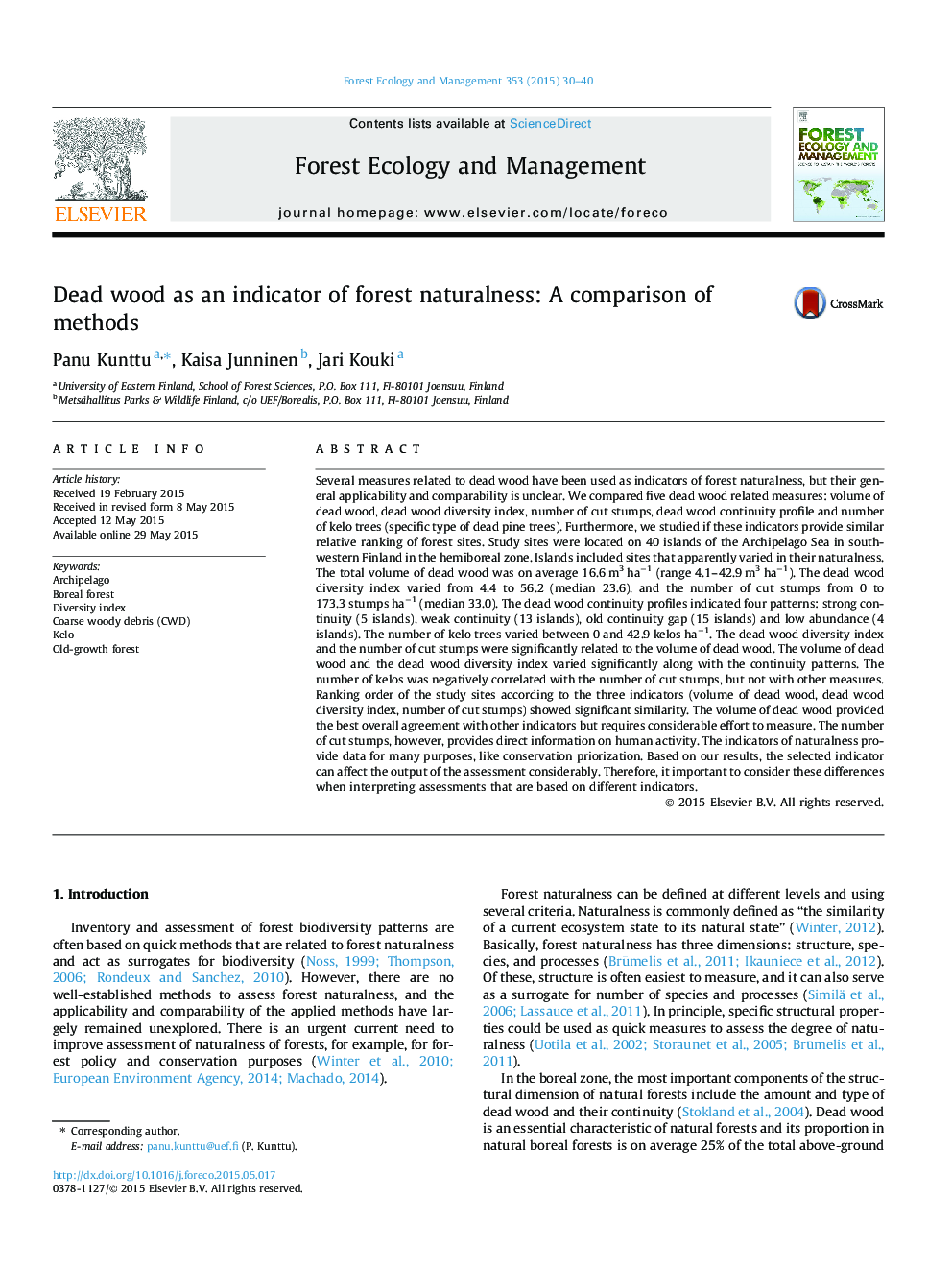| کد مقاله | کد نشریه | سال انتشار | مقاله انگلیسی | نسخه تمام متن |
|---|---|---|---|---|
| 86215 | 159172 | 2015 | 11 صفحه PDF | دانلود رایگان |
• Comparability of dead wood related indicators of forest naturalness is unknown.
• We found that only half of the pairwise comparisons of five indicators were correlated.
• Total volume of dead wood was most often correlated with other indicators.
• Indicators did not consistently select the five “most natural” and five “least natural” natural areas.
• Ranking of sites depended on the indicator which must be noted in conservation assessments.
Several measures related to dead wood have been used as indicators of forest naturalness, but their general applicability and comparability is unclear. We compared five dead wood related measures: volume of dead wood, dead wood diversity index, number of cut stumps, dead wood continuity profile and number of kelo trees (specific type of dead pine trees). Furthermore, we studied if these indicators provide similar relative ranking of forest sites. Study sites were located on 40 islands of the Archipelago Sea in southwestern Finland in the hemiboreal zone. Islands included sites that apparently varied in their naturalness. The total volume of dead wood was on average 16.6 m3 ha−1 (range 4.1–42.9 m3 ha−1). The dead wood diversity index varied from 4.4 to 56.2 (median 23.6), and the number of cut stumps from 0 to 173.3 stumps ha−1 (median 33.0). The dead wood continuity profiles indicated four patterns: strong continuity (5 islands), weak continuity (13 islands), old continuity gap (15 islands) and low abundance (4 islands). The number of kelo trees varied between 0 and 42.9 kelos ha−1. The dead wood diversity index and the number of cut stumps were significantly related to the volume of dead wood. The volume of dead wood and the dead wood diversity index varied significantly along with the continuity patterns. The number of kelos was negatively correlated with the number of cut stumps, but not with other measures. Ranking order of the study sites according to the three indicators (volume of dead wood, dead wood diversity index, number of cut stumps) showed significant similarity. The volume of dead wood provided the best overall agreement with other indicators but requires considerable effort to measure. The number of cut stumps, however, provides direct information on human activity. The indicators of naturalness provide data for many purposes, like conservation priorization. Based on our results, the selected indicator can affect the output of the assessment considerably. Therefore, it important to consider these differences when interpreting assessments that are based on different indicators.
Journal: Forest Ecology and Management - Volume 353, 1 October 2015, Pages 30–40
